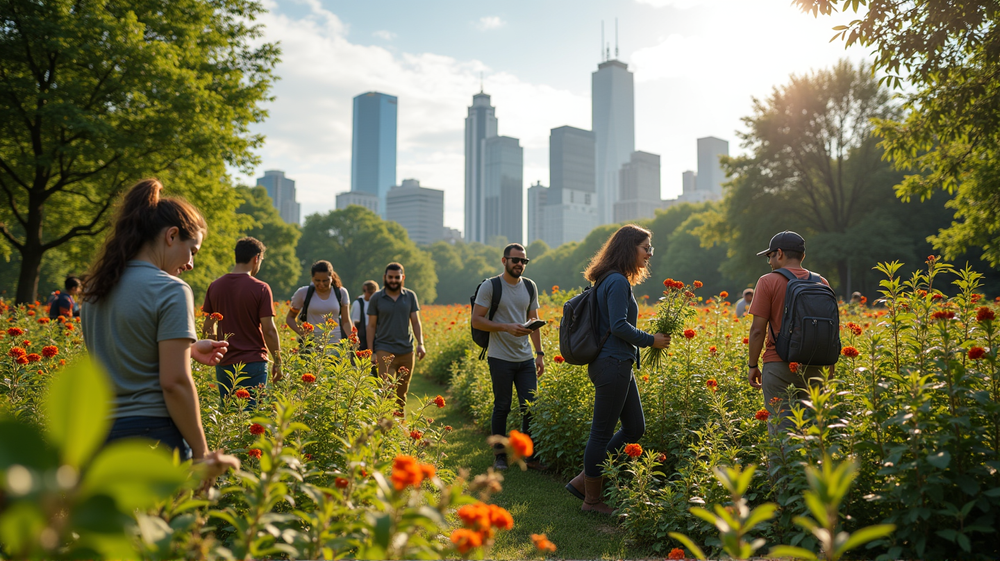In the sprawling urban landscapes of 2025, a remarkable revolution is unfolding. An increasing number of eco-conscious individuals are embracing urban foraging as a sustainable and exciting way to source ingredients for their everyday meals. The practice of gathering edible plants, fruits, and herbs from city environments is dramatically reshaping the culinary landscape and how city dwellers connect with their environments.
The Rise of Urban Foraging
A recent report by the Urban Agriculture Network highlights an intriguing finding: urban foraging can reduce grocery bills by up to 10% for regular participants. As more individuals head out to explore their bustling cityscapes, they are discovering plentiful supplies of wild berries, dandelions, and other nutritious options nestled within city parks and sidewalks. This trend aligns perfectly with the broader movement towards low-waste living and reducing one’s carbon footprint, making it an attractive option for the environmentally conscious city resident.
Starting Your Foraging Journey
Getting started with urban foraging is easier than you might think. Local foraging groups often organize guided tours to help newcomers identify safe edible plants. Modern technology aids this adventurous undertaking; apps like PlantSnap provide valuable insights into plant identification, ensuring safety and reliability when differentiating between edible plants and their toxic counterparts. Urban foraging enthusiasts are advised to explore community gardens and public spaces, and always remember to obtain the necessary permissions when foraging on private lands.
A Mindful Practice with Challenges
While the allure of urban foraging is strong, aspiring foragers must navigate challenges such as pollution and legal regulations. Expert foragers recommend targeting green spaces away from polluted areas and utilizing free time during daily commutes or walks for their gathering endeavors. Researching local laws is crucial to sidestepping legal complexities, but a growing community of urban foraging collectives assists practitioners by sharing maps of abundant harvest spots. According to Dainik Jagran MP CG, urban foraging communities are continuously evolving to make this practice more accessible and rewarding.
Nutritional and Ecological Benefits
The rewards of urban foraging are plentiful. With every new find, foragers add nutrient-dense ingredients like wild garlic to their meals, elevating their culinary creations. This practice turns walks through urban environments into delightful treasure hunts, fostering a sense of mindfulness and appreciation for nature. Families can incorporate urban foraging into bonding activities, providing children with lasting lessons about ecosystems and the importance of sustainability. In an era where ecological awareness is paramount, urban foraging offers an affordable and environmentally friendly alternative to traditional grocery shopping.
Urban foraging is more than just a trend; it represents a holistic approach to sustainability and creativity in meal preparation. By embracing this green lifestyle, urbanites find themselves more intricately connected with their cities, nurturing a deeper appreciation for their surroundings while enjoying fresher, freer meals.













